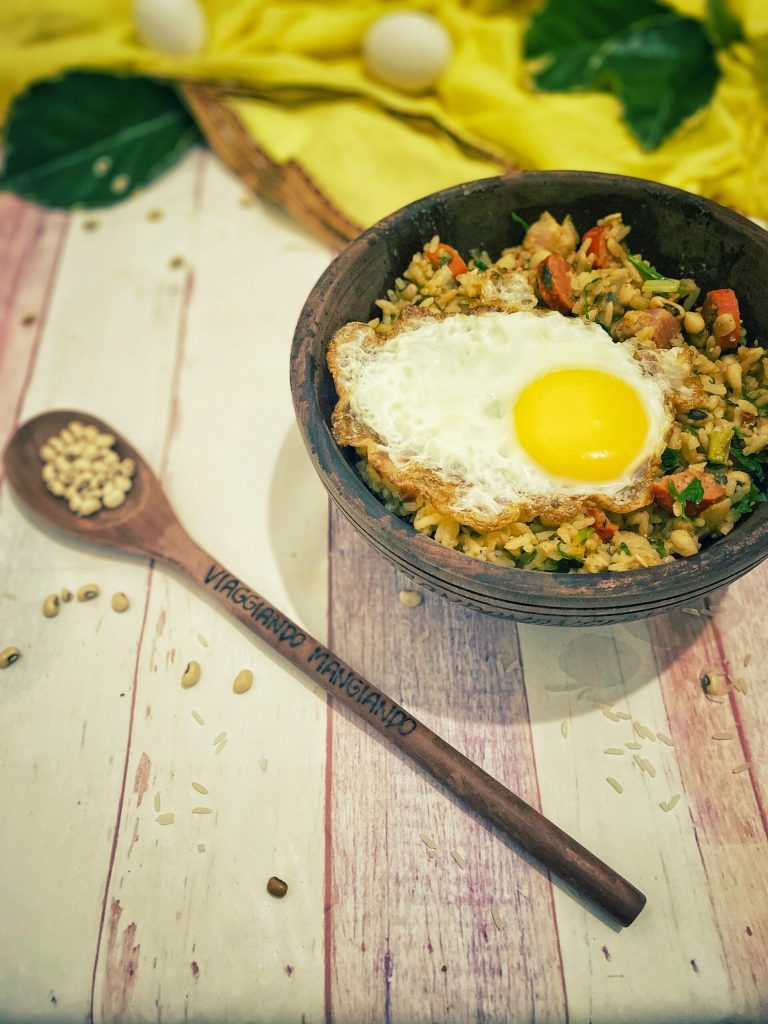Mexidãon means “mixed”.
There are no real records of its origin, but it’s known that in the old farms and in Minas Gerais, where all food was used, including leftovers, it was the way to reuse exactly what was left over.
The original version includes pork meats, such as linguiça calabresa and fried bacon. Then you add onions, garlic, rice, and beans and finally the farofa and the fried egg.

- Difficulty: Easy
- Cost: Cheap
- Preparation time: 10 Minutes
- Portions: 4 servings
- Cooking methods: Stove
- Cuisine: Brazilian
- Seasonality: All seasons
Ingredients
- 1 cup rice (already cooked)
- 3.5 oz bacon (diced)
- 3.5 oz linguiça calabresa
- 1 onion
- 1 clove garlic
- 3.5 oz cassava flour (for farofa)
- 2 eggs
- 4 oz beans or peas or corn or tomatoes (to your liking)
- as needed vegetable oil
- as needed salt and pepper
Steps
In a pan, add oil, then bacon and linguiça.
Add onion and garlic.
Stir.
Add the already cooked rice (steamed with salt or seasoned with garlic).
Adjust salt and pepper.
If necessary, add some water.
Finish with the egg, cassava flour, and fresh cilantro.
You can add other ingredients like cooked beans, peas, corn, tomatoes.
The eggs can be scrambled inside or added on top after being fried.

FAQ (Frequently Asked Questions)
Where is Minas Gerais located?
Minas Gerais is a large state in southeastern Brazil, located inland, and is known for its colonial towns that date back to the 18th century, the period of the gold rush.
What is linguiça calabresa? What can I substitute it with?
A relative of our sausage, made with pork and usually cooked in a pan with onion, it is also one of the essential ingredients of feijoada, another traditional Brazilian dish.
It’s not available in Italy, but it can be purchased in Brazil or online, otherwise, one can try to make it or it can be replaced with sausage or würstel.What are the most commonly used types of linguiça?
Linguiça toscana, made with pork, has a firm texture similar to sausages; the pork is coarsely ground and combined with fresh ingredients in its seasoning. Although it can be cooked or grilled and incorporated into various dishes, it’s highly appreciated at barbecues, making it the most used for churrasco.
Linguiça calabresa is the most popular for frying (see calabresa acebolada) and also on pizzas. In addition to salt and garlic, Calabrian pepper is used in its preparation, mixing about 90% pork and 10% fat—can be smoked or not.
Linguiça portuguesa uses seasoned pork in a mixture of pork and beef, and it must be cured and smoked.

